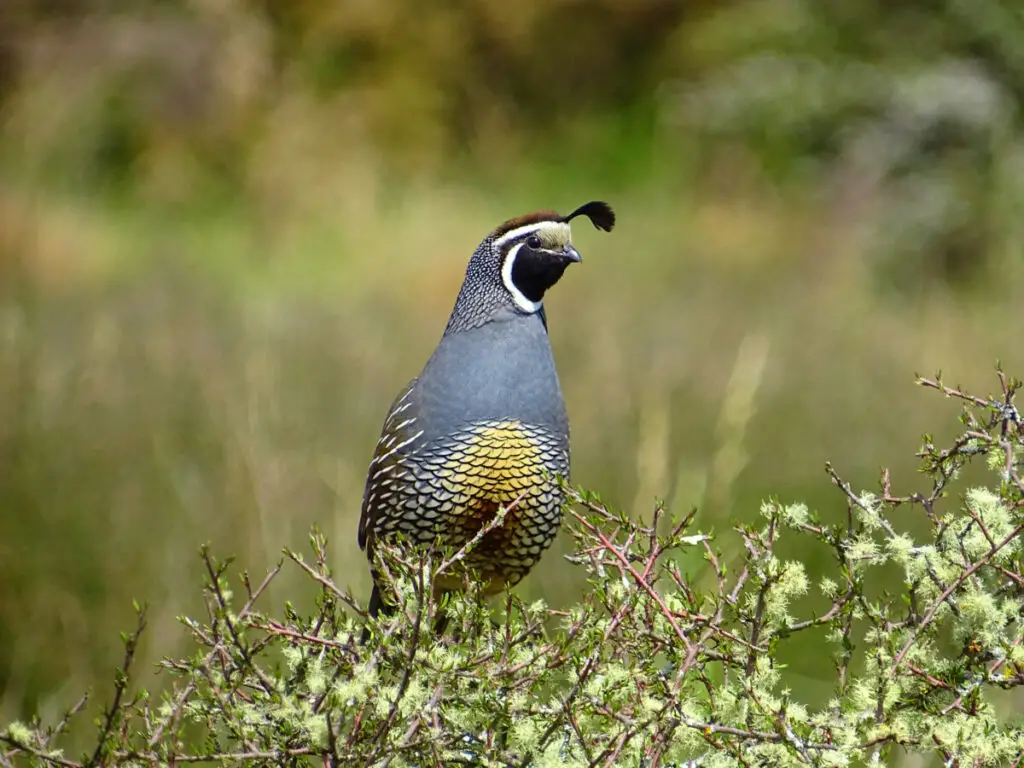
It’s that time of year again. For upland game hunters, it’s time to get out and find a tough species of bird to pursue. Well, it’s hard to contend with a small and agile bird like a quail.
Hunting quail is a pastime in many parts of the world. Quail was formerly a delicacy for European nobility. Here in the U.S., it’s a rootin-tootin good time for bird hunters to this day as well as a good meal afterward.
Let’s take a look at why types of quail are out there and how to find them.
Types of Quail
We know that there used to be more than 100 different species of quail in the world, thanks to studies by biologists and zoologists. These quail are Old World birds that belonged to the pheasant family.
There are currently six common species of quail found on the American continent. These quail are classified as belonging to a different family from the New World birds or Odontophoridae, which are Old World birds.
The six quail species found in the US are:
The California Quail
These quail are probably the most common you find throughout the West, where it’s known as the valley quail. A comma-shaped crest and white and black markings on the males’ heads serve as indicators of their gender. This particular kind of quail thrives in underbrush and mostly consumes seeds and insects.
The Mountain Quail
With gray, white, and chestnut-colored feathers, this bird is the biggest among all the other quail species. They are usually found in mountainous regions higher in elevation than most quail. They also inhabit marshy regions, although scrubland in the west is where they are most frequently found.
Mountain quail are elusive, yet because of their bigger size, they make for a common hunting target.
The Gambel Quail
The Gambel quail, which prefers desert areas over coastal California, is commonly spotted rummaging through prickly foliage. Due to this, Utah, Nevada, Colorado, and sections of Arizona, as well as southern California, make up the majority of the Gambel quail’s range.
Their black underbelly and cream-colored chest help to identify them. Gambel quail frequently wanders in packs.
The Montezuma/Montezuma Quail
With its spotted appearance, this bird stands out from the rest. The Montezuma quail inhabits grassy or wooded areas in the southwest US and Mexico and often appears on plateaus of mountains. When they land, these birds tend to stick to a small region and rarely form big groups.
The Scaled Quail
The Scaled quail has a light-colored breast with black stripes on its broad feathers, in contrast to the Montezuma quail’s dark chest plumage with white spots. This bird is mostly found in the southwestern US grasslands and scrublands, which include Arizona and sections of Texas.
The Northern Bobwhite
The majority of this species of quail are located in the eastern parts of the US. Their characteristic “bob-white!” sound is where they get their moniker. Despite having dark brown feathers that make them difficult to see, hunters in eastern states frequently target these birds.
Where to find quail
When planning your hunt, look for recognized quail-residence areas. Look for fields that have enough grass to shield the birds and annual weeds. Also, look for briar patches close to open spaces.
The briars are a common hiding place for quail. When they sense a threat, they act in this manner. Be prepared to locate your target by navigating large expanses of vegetation. Do not search in regions with excessively short or dense grass.
Quail have a difficult time navigating through tall grass and weeds. Additionally, while in open fields with bare grass, they could feel exposed.
They won’t stay for very long in an open area, like a field of grass that has been eaten. Quail like to hide in places where they can run through openings between brush and quickly fly if they have to.
Quail habitat, especially in the west, can be rough on gear. Take a look at some Pine Trees and Solitude recommendations here, to ensure you are prepared for this season.
(Pinetrees and Solitude may earn a commission from affiliate links in this article.)
Quail hunting difficulty varies
Quail hunting is comparable to other types of upland bird hunting. This means you will likely be walking through brush for a couple of miles in a desert-like environment. The terrain may vary from rather flat spots to areas that may be more steep. It really depends on where the best cover is for the birds.
All in all hunting Quail is not that bad and I would say it’s not hard to hunt quail physically speaking.
To be safe, make sure you are equipped for the hike, have well-fitting boots that have been broken in, and are dressed appropriately for the changing temperatures.
Dogs or no dogs for quail hunting
Quail hunting takes place in a variety of different environments. Brush patches on river bottoms, the edges of farming fields and brush-filled bottoms of canyons.
Like any other upland game birds quail hunting is best suited for hunting over a well-trained pointing dog. The dogs will be able to find fresh scent and locate any quail in the area quicker than a hunter alone.
That being said, it is not absolutely necessary. You can bump into quail without a dog as well. When you get near them they are often vocal and you use their sounds to hone in on their location.
Without a dog, I always recommend only shooting one with every flush and marking the last place you lost sight of it so you don’t lose it in the brush.
Guided quail hunting options
Luxury quail hunting packages are available at Tennessee’s Hunt Mill Hollow Ranch, and these packages come with lodging, meals, transportation inside the ranch, and guide costs. Each person gets 15 quails as part of the field hunt package, which costs $600.
The full-day field hunting with an overnight stay costs $1550 per person and includes thirty quails per person along with meals for breakfast, lunch, and dinner. Each additional quail cost $20.
A hunt for 40 quail, 30 chukar, or 30 pheasants in North Carolina’s Waterfall Preserve costs $550, $750, and $950, respectively.
Shotgun’s for quail hunting
Due to its lightweight, ease of handling, and reduced recoil compared to a 12-gauge shotgun, the 20-gauge shotgun is an excellent option for quail hunting. Additionally, it is adaptable and may be used for various upland game birds, including grouse and pheasants.
Another choice that is appropriate for quail hunting is a 28-gauge shotgun. It is easier to shoot accurately since it is lighter and has less recoil than a 20-gauge shotgun. It may not be ideal for larger birds due to its shorter reach as compared to 20-gauge shotgun.
Quail hunting season dates
Species and states have different quail hunting seasons. Quail hunting seasons typically begin in September and last through the end of January. It’s crucial to remember that particular deadlines and rules might differ from state to state and even from region to region within a state.
Let’s use the states of Arizona and Texas as an example. Texas is a southern-central state, whereas Arizona is toward the west of the country. Quail hunting is possible during the season in both states.
Quail season in Arizona normally begins in October and lasts until February. Check the most recent rules established by the Arizona Game and Fish Department, as the particular dates and bag restrictions may change.
Quail season typically starts in Texas in October and lasts until February. The quail populations in the state, which include bobwhite and scaled quail, are well-known for their diversity. The Texas Parks and Wildlife Department determines the precise dates and bag restrictions for each state region.
For the most recent details on quail hunting seasons, laws, and bag restrictions, always double-check with your state’s local wildlife management departments or agencies.
If you enjoyed this article, here are some more helpful articles from Pinetrees And Solitude.
- Essential Bird Hunting Gear For This Season
- What You Need For An Idaho Mule Deer Hunt
- Are German Shorthaired Pointers Good For Hunting?
- Black Hills Turkey Hunting: Wyoming & South Dakota
(This article was originally published on Pintreesandsolitude.com. If it is now published on any other site, it was done without permission from the copyright owner.)
